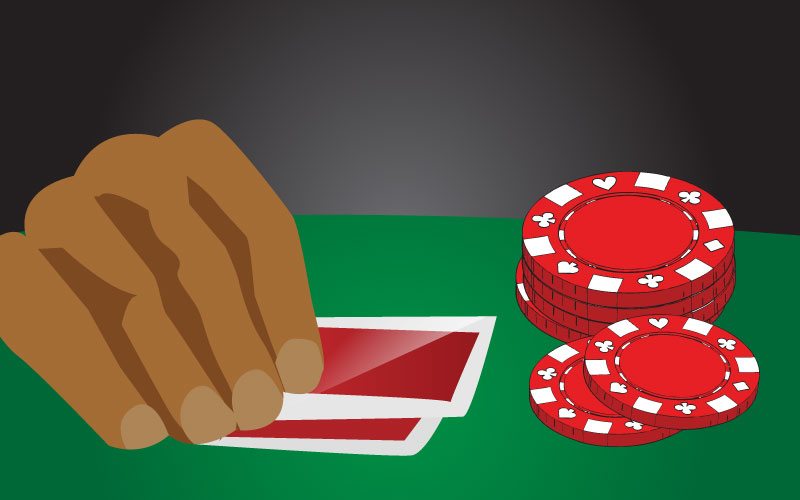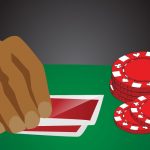In my last posts I went over some specific hands and talked about how they generally should be played. In this post I am going to go over some general preflop concepts.
Playing from the Blinds
Many players make mistakes from playing the blinds. Most players continue to play too many hands from the SB and will excuse their play because they are “getting a discount” since they already had to put 1/2 of a Small Bet into the pot. Whether we are in the blinds or not, the only thing that should be determining our preflop play is whether or not playing the hand has positive expected value. If it does, we should play the hand; if it doesn’t we should fold.
From the blinds, our hand’s chance of winning does not need to be as great as it does from out of the blinds because we have already been forced to put chips into play. For example, when a hand is limped all the way to the big blind, and the big blind has the option of raising or checking, then the big blind will always have a positive expectation to check his hand. Mathematically the big blind will always have to put in 0 chips to win however many chips are in the pot. Because he has to put nothing in and his hand always will have a greater than 0% possibility of winning the hand, the big blind will always have a positive expectation.
In general our rules for playing from the blinds are that we can loosen our starting hand ranges significantly from the blinds. The more players that are in the pot, the wider we can loosen our range.
FROM THE SB
The more people that have entered the pot in front of us for a limp means the wider we can loosen our range from the Small Blind. This doesn’t mean that you should play any two cards including 72o but it does mean that you can complete with any two suited cards; most connected cards; and any two cards that are over a 7 if there are at least 3 limpers in front of you. However, if someone has raised in front of you from the small blind then you should be coldcalling this raise about as often as you would cold-call from MP, which is almost never.
FROM THE BB
Obviously if the pot is limped to us in the BB we are going to play every hand that we have since we can do so for free. As I said previously, we should still raise our big hands for value from the Big Blind, but every thing else we should just check. In raised pots we will often still have the correct odds to call with a pretty wide range since we are getting the biggest discount possible in the BB. For example, even in the worst scenario where the pot is raised preflop from a tight player and everyone folds and it comes to us in the BB, then we will still only need 33% equity to call even in a game that rakes 1.5 SBs from every pot that sees a flop. The more players there are in the pot in a raised pot, the wider your starting hand range should loosen.
FIGURING OUT STARTING HAND RANGES – PUTTING IT ALL TOGETHER
As I said earlier, the only thing that should be determining our preflop play is whether or not playing the hand has positive expected value. If it does, we should play the hand; if it doesn’t we should fold. Figuring out what hands to play really depends on how many players are in the pot and how loose those players are. Let’s use an example just to figure out how to determine if playing a hand is + EV.
Let’s say we are in the small blind with Q5o. Q5o is a junk hand that should be folded immediately when you are not in the blinds from any position. However in this case we are in the SB so we have a discount. Two loose players who play abut 50% of their hands and have ranges of any pair, any ace, any suited cards, any broadway, and some other offsuit hands like K9-89o have limped in ahead of you.
You are playing in a 4/8 game where the house rakes $5 from every pot that sees a flop ($4 for the rake and $1 for a jackpot drop) – you will tip $1 if you win the hand so we will deduct 1.5 SBs from every pot. The BigBlind has not raised a pot yet preflop so we don’t expect him to raise behind us.
This means that if we complete and make the call for .5 SBs preflop the pot will have 2.5 SBs. So we need to put in .5 Sbs to win 2.5. .5/2.5 = .2. This means that our hand needs to have 20% or more equity to win the hand in order for us to continue with the hand. Many players would say that you should complete here with any 2 cards against two super loose opponents and a big blind who could have any two cards since you are getting a discount. But mathematically we should only call if our hand has at least 20% equity.
In this case when we plug Q5o into pokerstove we discover that Q5o actually only has about 19.4% equity against these ranges and even for just 1/2 of a SB more we should fold preflop.
Submit your review | |









